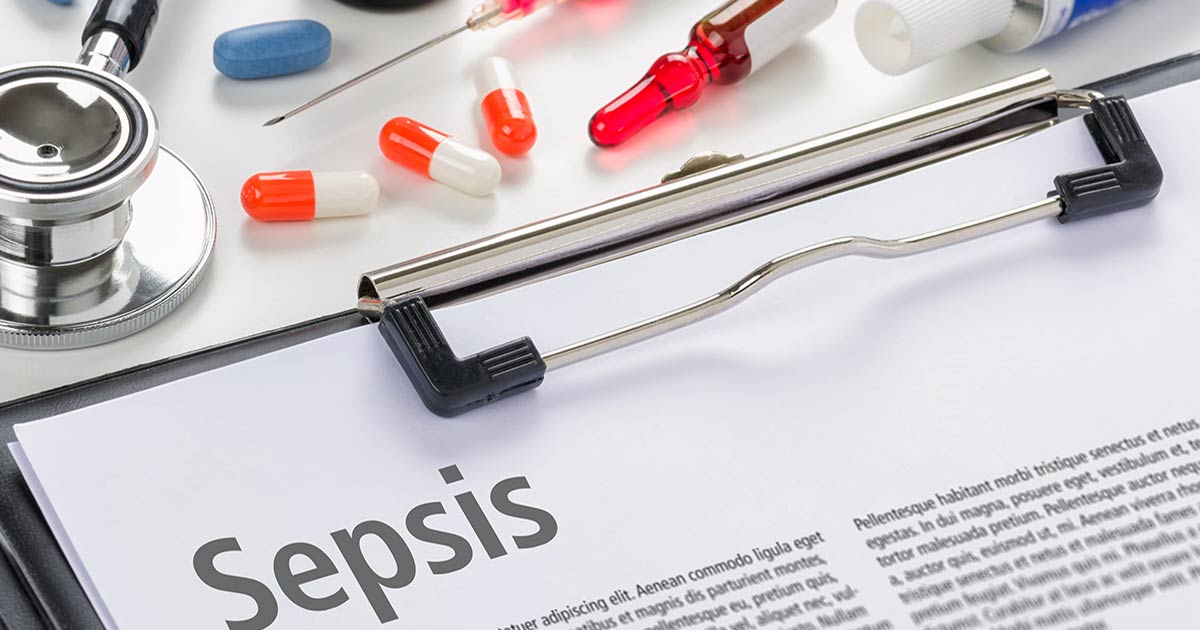Understanding the signs of Sepsis
- Category: Health & Wellness, Infection Prevention
- Posted On:
- Written By: Erica Sanchez

According to the Sepsis Alliance, nearly 3 million people in the U.S. are affected each year by sepsis. During Sepsis Awareness Month, Lompoc Valley Medical Center wants to make sure our community understands this very serious condition.
What is Sepsis?
According to the Centers for Disease Control and Prevention (CDC), sepsis is the body’s extreme response to an infection and can lead to tissue damage, organ failure, and death if not treated rapidly.
Any type of infection in your body can trigger the condition. Bacterial infections are the most common source, but it can also be caused by viral, fungal, or parasitic infections. Sepsis is often linked to lung infections, such as pneumonia, or urinary tract infections, such as the bladder or kidney.
Risk Factors
Although anyone can be at risk for developing sepsis, some people are more at risk than others. Individuals that are immunocompromised are at the highest risk, such as the very young, very old, and people with chronic illnesses such as cancer and diabetes.
What to Watch For:
Signs you may be experiencing sepsis:
- A rapid heart rate
- A rapid respiratory rate
- Clammy or sweaty skin
- Fever or shivering or feeling very cold
- A drop in blood pressure, reducing blood flow to vital organs
- Extreme pain or discomfort
- Feeling extremely ill
Treatment
Sepsis requires immediate treatment that should not be delayed. When treatment has delayed the risk of mortality increases. Intravenous fluids, IV antibiotics, and diagnostic tests, such as labs and x-rays, will be necessary to treat sepsis. It’s important to know that you should not attempt to treat sepsis yourself -- home remedies are not effective against sepsis.
Prevention Methods
There are some important things you can do to help prevent sepsis:
- Vaccinations can help protect you against viruses, such as influenza, which can lead to sepsis.
- Take care of chronic health conditions.
- Clean open wounds as quickly as possible and monitor for signs of infection. Cuts and scrapes can allow harmful bacteria to enter your body.
- Wash your hands.
- If you are prescribed antibiotics, finish the entire course of treatment, even if you feel better.
If you suspect you are experiencing or have symptoms of sepsis, seek medical care right away. To learn more about sepsis, log onto www.cdc.gov/sepsis/index.html.
At LVMC, we take this condition very seriously. In October of 2015, the Centers for Medicare and Medicaid Services required all hospitals to report outcomes of metrics shown to improve sepsis outcomes and reduce mortality from Sepsis. We report all required elements of the sepsis measure to CMS.
Lompoc Valley Medical Center developed a Sepsis Team and Sepsis Committee comprised of nurses, physicians, an Infection Preventionist, Information Technology professionals, and others. A Sepsis Coordinator was assigned to lead the project. The goal was to put systems and processes in place that aligned with the Sepsis Measure goals of early detection and intervention for patients at risk for Sepsis. Members worked with Infection Preventionists, Infectious Disease Specialists, and nurses across organizations to share best practice information, along with the latest guidelines from the Centers for Disease Control, Surviving Sepsis Campaign, and CMS.
Work is ongoing, and we have implemented sepsis specific questions and screening into the assessments of patients in all units of the hospital. We put in place extensive educational resources for nurses and physicians and have hosted sepsis simulation training. We maintain educational resources for our staff and keep updated on emerging information.
For patients, the word Sepsis itself helps you determine whether you may be suffering from this infection:
- S: Shivering, fever, or very cold
- E: Extreme pain or general discomfort
- P: Pale or discolored skin
- S: Sleepy, difficult to rouse, confused
- I: “I feel like I might die”
- S: Short of breath
Watch for a combination of these symptoms. If you suspect sepsis, see a doctor immediately, call 911 or go to a hospital and state, “I am concerned I have sepsis.”
- For ongoing information, see sepsis.org.






